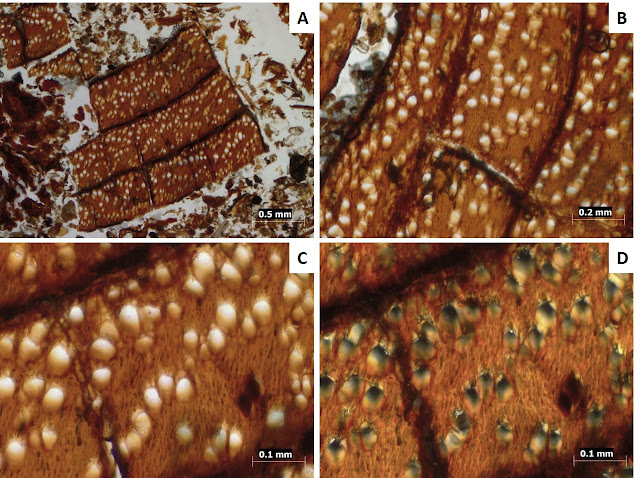Micrograph of the Month: Wood fragment
I'm in the middle of writing a brief introductory paper about the work we are doing at Paisley Caves, which includes some of the micromorphology results from our pilot study. The slides from this site are complex, and also so fascinating. Complex because the are very heterogeneous and include a huge variety of biogenic material, including lots of fragments of plant tissues, and there is also some weird stuff going on with the chemistry in the cave environment. Here is an example of a small fragment of wood, within a layer of mixed material overlying a layer of microfaunal dung pellets. The layer is between two radiocarbon dates approximately 8180 and 9565 years cal BP. In the picture below I've shown it at a range of magnifications, and images C and D show it in PPL (C) and XPL (D). Modern wood in XPL usually looks a bit fluorescent because cellulose is birefringent. Usually with archaeological material I'm much more accustomed to seeing wood in the form of charcoal! The only other material I've seen like this myself in archaeological contexts is waterlogged wood, though a quick but of online research shows that dessicated wood from an Egyptian coffin also retains this property. I haven't yet identified the genus or species of this, though I am hoping a friendly archaeobotanist can perhaps help with this, given that the pore structure seems fairly clear! Most of the species that come to mind from this region are softwoods, whereas this looks like a hardwood of some sort.


Comments
Post a Comment